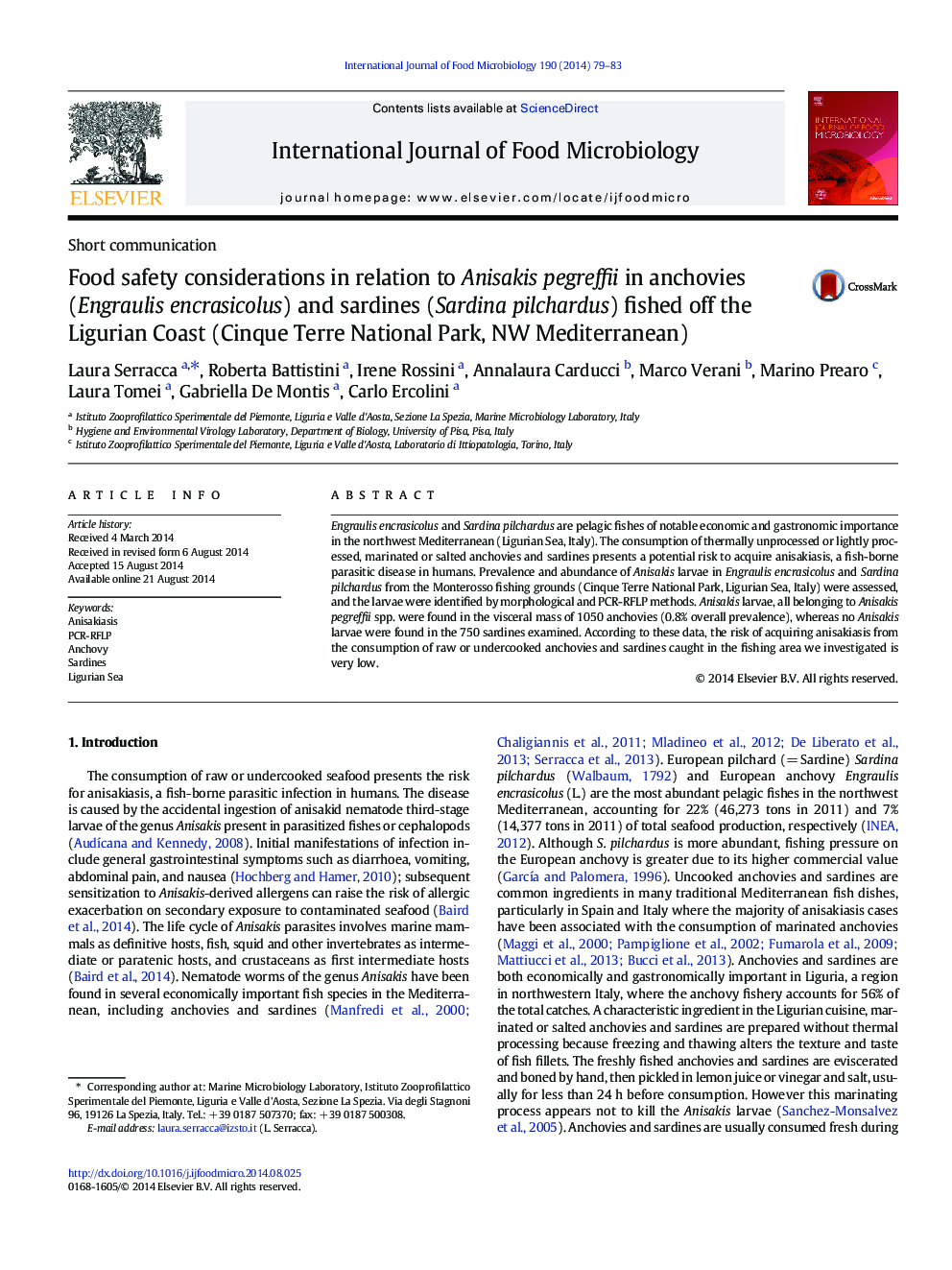| کد مقاله | کد نشریه | سال انتشار | مقاله انگلیسی | نسخه تمام متن |
|---|---|---|---|---|
| 4366812 | 1616593 | 2014 | 5 صفحه PDF | دانلود رایگان |

• 0.8% of anchovies were infected with Anisakis larvae.
• Larvae were identified by PCR-RFLP as A. pegreffii.
• All Anisakis larvae were detected in the visceral mass and none in the musculature.
• No Anisakis larvae were found in Sardina pilchardus.
Engraulis encrasicolus and Sardina pilchardus are pelagic fishes of notable economic and gastronomic importance in the northwest Mediterranean (Ligurian Sea, Italy). The consumption of thermally unprocessed or lightly processed, marinated or salted anchovies and sardines presents a potential risk to acquire anisakiasis, a fish-borne parasitic disease in humans. Prevalence and abundance of Anisakis larvae in Engraulis encrasicolus and Sardina pilchardus from the Monterosso fishing grounds (Cinque Terre National Park, Ligurian Sea, Italy) were assessed, and the larvae were identified by morphological and PCR-RFLP methods. Anisakis larvae, all belonging to Anisakis pegreffii spp. were found in the visceral mass of 1050 anchovies (0.8% overall prevalence), whereas no Anisakis larvae were found in the 750 sardines examined. According to these data, the risk of acquiring anisakiasis from the consumption of raw or undercooked anchovies and sardines caught in the fishing area we investigated is very low.
Journal: International Journal of Food Microbiology - Volume 190, 3 November 2014, Pages 79–83